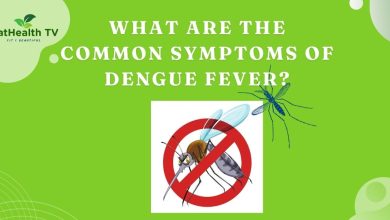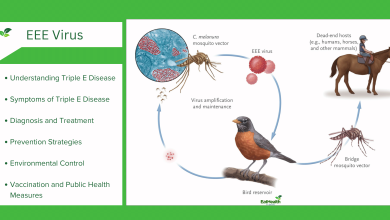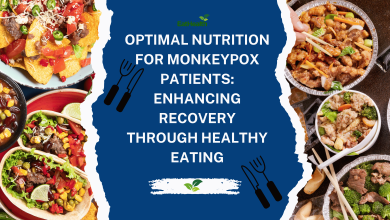What are The Names of Childhood Vaccinations?
Empowering Health: Unveiling the Vital Names of Childhood Vaccinations

Childhood Vaccinations: A Comprehensive Guide to Immunization
Childhood vaccinations play a pivotal role in safeguarding the health and well-being of children worldwide. These immunizations not only protect individuals from a myriad of preventable diseases but also contribute to the collective immunity of communities. In this comprehensive guide, we will delve into the names, importance, and efficacy of childhood vaccinations, from their historical roots to their modern-day significance.
The Importance of Childhood Vaccinations
Childhood vaccinations are crucial for several reasons. Firstly, they prevent the spread of infectious diseases that can cause serious illness, disability, and even death. Vaccinations also contribute to the concept of herd immunity, wherein a sufficiently high proportion of individuals within a community are immune to a disease, thereby providing indirect protection to those who are not vaccinated or who cannot be vaccinated due to medical reasons. Additionally, vaccinations have led to the eradication or near-elimination of several deadly diseases, such as smallpox and polio, demonstrating their profound impact on public health.
Understanding Immunization
!Before delving into the specific names of childhood vaccinations, it’s important to understand the concept of immunization. Immunization is the process by which a person becomes protected against a disease through vaccination. Vaccines contain weakened or inactive forms of a particular pathogen or its toxins, which stimulate the body’s immune system to produce an immune response without causing the disease itself. This primes the immune system to recognize and effectively combat the pathogen if encountered in the future, thereby conferring immunity.
The Schedule of Childhood Vaccinations
Childhood vaccinations are administered according to a recommended schedule established by healthcare authorities, such as the Centers for Disease Control and Prevention (CDC) in the United States. This schedule outlines the timing and dosage of each vaccine to ensure optimal protection for children from birth through adolescence. The schedule may vary slightly depending on factors such as geographic location, individual health status, and the availability of certain vaccines. However, adherence to the recommended schedule is crucial to maximize the effectiveness of immunization. Just as we know Vaccination Benefits: Protecting Your Health
Common Childhood Vaccinations Now, let’s explore the names and characteristics of some common childhood vaccinations:
Measles, Mumps, and Rubella (MMR) Vaccine: The MMR vaccine is a combination vaccine that protects against measles, mumps, and rubella, three highly contagious viral diseases. Measles can cause fever, rash, cough, and in severe cases, complications such as pneumonia and encephalitis. Mumps can lead to swollen salivary glands, fever, headache, and in some cases, complications such as meningitis and deafness. Rubella, also known as German measles, can cause mild fever and rash but can be particularly dangerous if contracted by pregnant women, leading to birth defects or miscarriage. The MMR vaccine is typically administered in two doses, with the first dose given at 12-15 months of age and the second dose at 4-6 years of age.
Diphtheria, Tetanus, and Pertussis (DTaP) Vaccine: The DTaP vaccine protects against diphtheria, tetanus, and pertussis (whooping cough). Diphtheria is a bacterial infection that can lead to a thick coating in the throat, making it difficult to breathe. Tetanus, also known as lockjaw, is caused by a bacterial toxin that affects the nervous system, leading to muscle stiffness and spasms. Pertussis is a highly contagious respiratory disease characterized by severe coughing fits, which can be particularly dangerous for infants. The DTaP vaccine is administered in a series of five doses, with the initial three doses given at 2, 4, and 6 months of age, followed by booster doses at 15-18 months and 4-6 years of age.
Polio Vaccine: The polio vaccine protects against poliomyelitis, a viral infection that can cause paralysis and, in severe cases, death. Polio was once a widespread disease, but thanks to vaccination efforts, it has been eliminated from most parts of the world. The polio vaccine is administered in a series of four doses, with the first three doses given at 2, 4, and 6-18 months of age, followed by a booster dose at 4-6 years of age.
Hepatitis B Vaccine: The hepatitis B vaccine protects against hepatitis B, a viral infection that can cause liver inflammation and, in some cases, lead to chronic liver disease, liver cancer, or death. Hepatitis B is transmitted through contact with infected blood or bodily fluids and can be particularly dangerous for infants if contracted at birth. The hepatitis B vaccine is typically administered in a series of three doses, with the first dose given at birth, the second dose at 1-2 months of age, and the third dose at 6-18 months of age.
Haemophilus influenzae type b (Hib) Vaccine: The Hib vaccine protects against Haemophilus influenzae type b, a bacterial infection that can cause severe illnesses such as meningitis, pneumonia, and epiglottitis (inflammation of the epiglottis). Hib was once a leading cause of bacterial meningitis in young children, but widespread vaccination has dramatically reduced its incidence. The Hib vaccine is typically administered in a series of three or four doses, with the first dose given at 2 months of age, followed by additional doses at 4 and 6 months of age (and sometimes a booster dose at 12-15 months of age).
Pneumococcal Conjugate Vaccine (PCV): The PCV protects against pneumococcal disease, which can cause pneumonia, meningitis, and bloodstream infections. Pneumococcal bacteria are a common cause of serious illness, especially in young children and older adults. The PCV vaccine is typically administered in a series of four doses, with the first three doses given at 2, 4, and 6 months of age, followed by a booster dose at 12-15 months of age.
Rotavirus Vaccine: The rotavirus vaccine protects against rotavirus, a highly contagious virus that can cause severe diarrhea and vomiting in infants and young children. Rotavirus infection can lead to dehydration and, in severe cases, hospitalization or death. The rotavirus vaccine is administered orally in a series of two or three doses, depending on the vaccine formulation, with the first dose given at 2 months of age and subsequent doses given at 4 and/or 6 months of age.
Varicella (Chickenpox) Vaccine: The varicella vaccine protects against varicella-zoster virus, which causes chickenpox. Chickenpox is a highly contagious viral infection characterized by an itchy rash, fever, and fatigue. Although chickenpox is usually a mild illness in children, it can lead to complications such as bacterial skin infections, pneumonia, and, in rare cases, severe neurological problems. The varicella vaccine is typically administered in two doses, with the first dose given at 12-15 months of age and the second dose at 4-6 years of age.
Influenza (Flu) Vaccine: Administered annually to protect against seasonal flu viruses.
HPV Vaccine: Given to prevent human papillomavirus infection, which can lead to various cancers later in life.
Conclusion:
Childhood vaccinations are a cornerstone of public health, providing protection against a range of preventable diseases. By adhering to the recommended immunization schedule and ensuring widespread vaccine coverage, we can continue to safeguard the health and well-being of children and communities worldwide. It is essential to recognize the names and importance of childhood vaccinations to make informed decisions about immunization and promote vaccine acceptance.
In conclusion, the names of childhood vaccinations encompass a range of diseases, each with its specific vaccine designed to provide immunity and prevent illness. From the MMR vaccine guarding against measles, mumps, and rubella to the polio vaccine eradicating a once-prevalent disease, these immunizations have significantly reduced the burden of infectious diseases worldwide.




